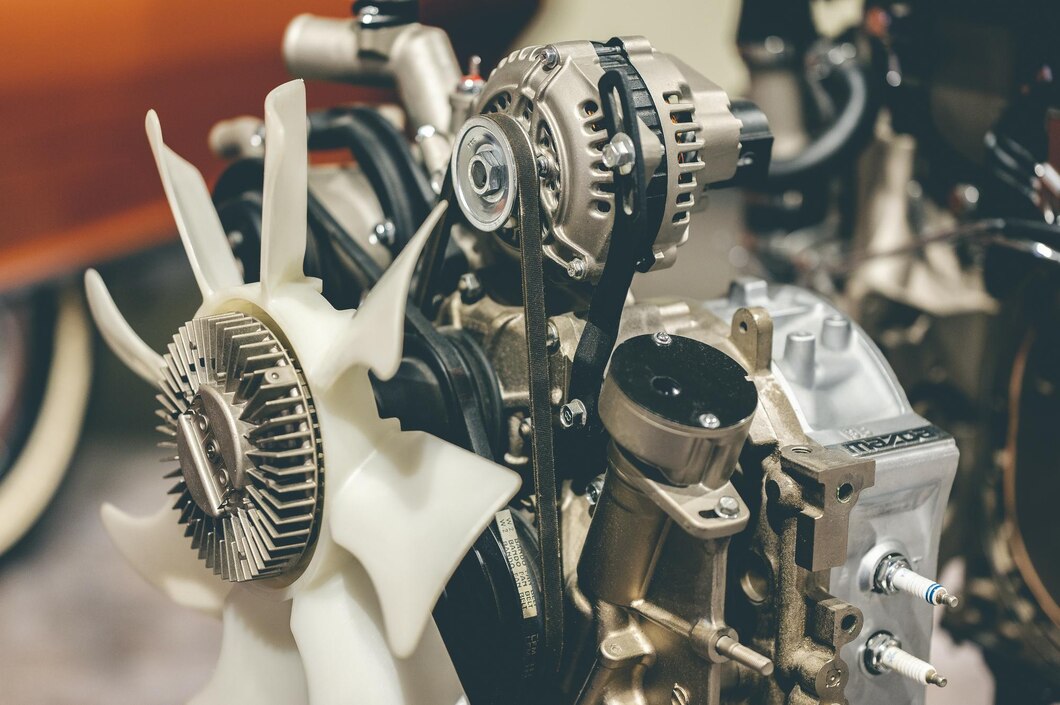A vehicle’s engine is a symphony of moving parts, each playing a crucial role in its smooth operation. Among these components, belts and chains are the unsung heroes that synchronize the intricate dance of the engine’s internal mechanisms. Understanding the various types of belts and chains in your car is essential for maintaining optimal performance. Let’s explore the different types you must know about:
1. Serpentine Belt:
Function:
The serpentine belt is a long, continuous belt that drives multiple engine accessories, including the alternator, power steering pump, and air conditioning compressor. It plays a central role in powering essential components.
Maintenance:
Regular inspection and replacement of the serpentine belt are crucial to prevent wear-related issues. A damaged serpentine belt can lead to the failure of various engine functions.
2. Timing Belt:
Function:
The timing belt ensures the synchronization of the engine’s camshaft and crankshaft, controlling the opening and closing of engine valves. This synchronization is vital for proper combustion and engine performance.
Maintenance:
Timing belts have a recommended replacement interval, typically every 60,000 to 100,000 miles. Neglecting this replacement can lead to severe engine damage, as a failing timing belt can cause the pistons and valves to collide.
3. Timing Chain:
Function:
Similar to the timing belt, the timing chain also synchronizes the camshaft and crankshaft. However, timing chains are made of metal and are typically more durable than timing belts.
Maintenance:
Timing chains generally have a longer lifespan than timing belts and may not need regular replacement. However, they still require periodic inspection, and any signs of wear or damage should be addressed promptly.
4. V-Belt:
Function:
V-belts are often used to drive specific accessories like the water pump, air conditioning compressor, or power steering pump. They have a V-shaped cross-section and are commonly found in older vehicles.
Maintenance:
Regular checks for wear and proper tension are essential for V-belt maintenance. They may need adjustment or replacement if signs of damage, cracking, or slipping occur.
5. Accessory Belt:
Function:
Accessory belts, also known as drive belts, power accessories like the alternator, water pump, and air conditioning compressor. These belts contribute to the overall efficiency of the engine.
Maintenance:
Similar to V-belts, regular inspection is necessary for accessory belts. Tension adjustments and replacements should be done when wear or damage is observed.
6. Fan Belt:
Function:
The fan belt, connected to the engine’s cooling fan, helps regulate the engine temperature by controlling the fan’s rotation.
Maintenance:
Regular checks for proper tension and signs of wear are crucial for fan belt maintenance. Any issues with the fan belt can lead to overheating, impacting the engine’s performance.
Understanding the role of different belts and chains in your vehicle is vital for preventive maintenance. Regular inspections, adherence to replacement intervals, and prompt attention to signs of wear or damage are essential practices for ensuring the longevity and optimal performance of your car’s engine. Remember, these belts and chains are the unsung heroes keeping the engine’s heartbeat in harmony, and proper care ensures a smooth and reliable ride.











